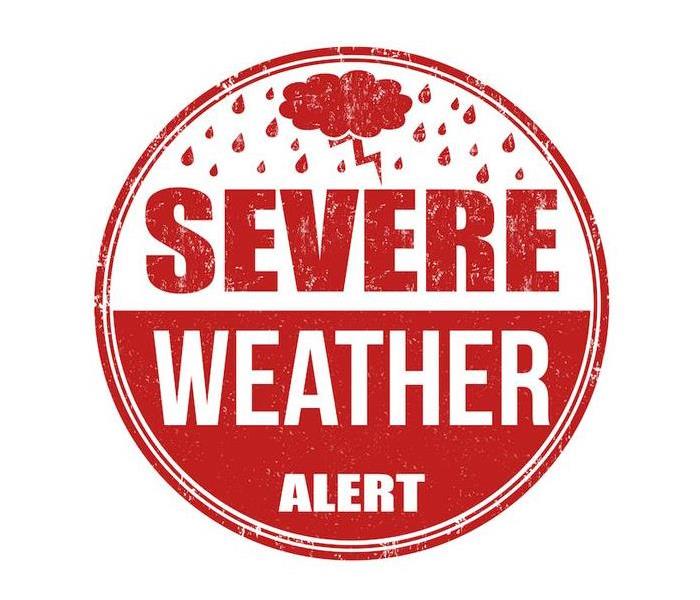Archived Storm Damage Blog Posts
Weathering the Storm: How SERVPRO® of West Beaver County Mitigates Storm Damage
4/30/2024 (Permalink)
 Tarping the Home Owner's Roof Can Prevent Additional Water From Entering Into the Home.
Tarping the Home Owner's Roof Can Prevent Additional Water From Entering Into the Home.
As the winds howl and the rain pours, homeowners across Beaver County brace themselves for the unpredictable fury of storms. At SERVPRO Beaver County, we understand the havoc that storms can wreak on homes and communities. From flooding to wind damage, we've seen it all. Recently, our team responded to a surge of disaster restoration calls following a series of powerful storms that swept through the area. In this blog post, we'll explore the importance of mitigating storm damage and how SERVPRO Beaver County is dedicated to helping homeowners weather the storm.
The Impact of Storm Damage:
Storms can leave a trail of destruction in their wake, causing flooding, structural damage, and even mold growth. The aftermath of a storm can be overwhelming for homeowners, leaving them unsure of where to turn for help. That's where SERVPRO Beaver County comes in. With years of experience in disaster restoration, we're equipped to handle the aftermath of even the most severe storms.
Our Response to Recent Storms:
In the wake of the recent storms, our team at SERVPRO Beaver County sprang into action. We received numerous calls for assistance from homeowners grappling with water damage, wind damage, and more. Our priority was to respond swiftly and efficiently, providing homeowners with the support and expertise they needed during this challenging time. From extracting standing water to tarping damaged roofs, our team worked tirelessly to mitigate further damage and restore homes to their pre-storm condition.
Mitigating Storm Damage:
Mitigating storm damage is crucial in minimizing the long-term impact on homes and communities. Prompt action can prevent secondary damage such as mold growth and structural deterioration. At SERVPRO Beaver County, we understand the importance of acting quickly. Our team utilizes advanced techniques and equipment to extract water, dry affected areas, and restore damaged structures. By addressing storm damage promptly, we can help homeowners save time, money, and stress in the restoration process.
Preparing for the Future:
While we can't control the weather, we can take steps to prepare for future storms. SERVPRO Beaver County offers proactive services such as emergency preparedness planning and storm damage mitigation consultations. By partnering with us, homeowners can gain peace of mind knowing that they have a trusted ally in the fight against storm damage.
At SERVPRO Beaver County, we're committed to helping homeowners weather the storm. From our rapid response to our comprehensive restoration services, we're here to support our community every step of the way. If you've been affected by storm damage, don't hesitate to reach out to SERVPRO Beaver County for prompt, professional assistance. Together, we'll navigate the storm and emerge stronger on the other side.
How to Prevent a Lightning Fire From Affecting Your Home | SERVPRO® of Beaver County
9/20/2022 (Permalink)
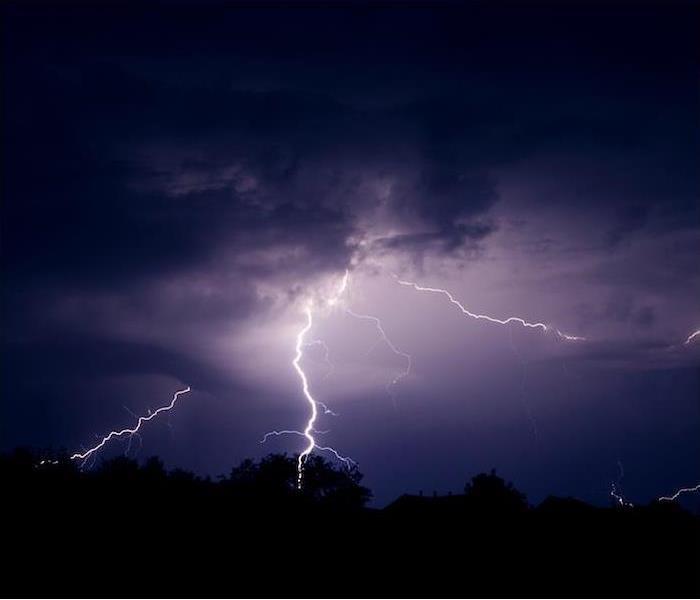 If you are dealing with smoke or fire damage from a recent fire, call SERVPRO of Beaver County to learn about a restoration solution for your issue.
If you are dealing with smoke or fire damage from a recent fire, call SERVPRO of Beaver County to learn about a restoration solution for your issue.
It’s possible to prevent most manmade causes of home fires, especially if you have the right safety equipment. However, many natural causes also put you at risk, one being lightning.
There were over 70,000 damage claims made in 2020 regarding lightning strikes, and the damage can include knocked-down trees, fried electrical systems or even home fires that were started by lightning.
Over 6,000 strikes happen every minute, showing us how frequent this disaster really is and why it’s important to be prepared.
What Is Lightning?Lightning is a concentration of electrical energy that usually happens between clouds and the ground. These strikes can also occur during forest fires, volcanic eruptions and snowstorms, but “dry lightning” is also a significant risk.
Dry lightning happens without rain, and it causes a significant spike in the risk of wildfires. While the threats vary seasonally, it’s a constant risk that we must prepare for in addition to being ready for traditional lightning.
Protecting Your Home From Lightning FiresWhen a fire starts from lightning, you may not notice it immediately as the fire will start in the attic or walls. But you will probably hear the strike! The loud explosion sound, black spots on your walls or the smell of smoke are signs that you should call the fire department immediately.
A great way to prevent lightning fires is to install a lightning rod. This metal pole will take the energy from the lightning strike and direct it away from your home.
Additionally, consider adding a whole-home surge protector to ward off fires that begin from electrical surges and faulty wiring.
When Lightning Strikes NearbyLightning is also known to start wildfires easily, and while different regions have varying peak seasons, it’s crucial for everyone to prepare. Over 9,000 fires each year originate from lightning strikes, and these flames often burn faster and longer.
Remove any dead trees or vegetation from your property, and think about how a defensible zone could improve your fire protection. Additionally, add smoke detectors to every level of your home so that you have full coverage and an added warning when flames arise.
If your house is affected by fire, call SERVPRO of Beaver County to receive a quick response and excellent support. Our expert team is trained to handle every type of fire cleanup, and our industry-leading equipment will have you back in your home as soon as possible.
Have you experienced smoke or fire damage in your home? Call us today to get the restoration finished fast.
The Most Common Ways Severe Storms Can Damage Your Home | SERVPRO® of Beaver County
8/18/2022 (Permalink)
High-powered storms can bring many disasters to your doorstep. From extreme winds to heavy rains and flooding, they can all do serious damage to your home.
The type of storm and the events it causes can expose your home to multiple kinds of damage. Calculating your home’s potential level of damage is complicated and involves looking at your home’s qualities, age and the landscape surrounding it.
While it is important for everyone to be aware of storm damage, it’s especially important for us here in Pennsylvania. Flooding, storms, fire and winter storms are just a few of the most common disasters that we see in our area. You need to prepare for these events by drafting an emergency plan and learning about what risks you may see.
Look at these most common types of storm damage and how you can get ready for them:
Wind
Wind damage happens because high-speed gusts hit buildings and can rip off roof tiles or your siding. While tornadoes and hurricanes are usually to blame, even minor storms can cause wind speeds of nearly 100 mph. These kinds of winds can throw debris through windows and doors and puncture holes in your roof’s lining.
You should take time to clear your property of any debris like the ones listed above and tie down any furniture that could become dangerous during high winds.
Water
As storms cause heavy rainfall, that water can pool around your house and cause damage both during and after the storm has passed. Water can seep through your windows and doors or potentially down into your foundation and cause irreversible damage.
To reduce the amount of damage you could experience, think about using landscaping techniques that direct water away from your home’s structure. You can also choose to build a rain garden, which will collect excess rainwater and prevent a flood on your land.
Lastly, make sure your gutters are clean and that your roof is in good condition so that it can protect you from a storm.
Impact
The final major kind of storm damage is from impacts. Typically, “impact damage” is caused by a falling tree or a limb knocked down by high winds. However, anything that hits (or impacts) your home with force is considered impact damage.
The best way to avoid this is to keep your trees healthy and have any dead or dying ones removed as soon as possible.
Disasters caused by weather resulted in an excess of $145 billion in our country in 2021 alone. By following these tips and understanding the weather in your region, you can keep your house safer and prevent excessive damage from occurring.
If storm damage affects your home, call SERVPRO of Beaver County immediately so that you can get started on your restoration. Our team of experts will jump into action and have you back in your home before you know it.
When you suffer storm-related damage to your home or business, it’s important that you know who to call! Contact us today to get your storm damage restoration started faster.
How SERVPRO Can Save You From Disaster | SERVPRO® of Beaver County
8/4/2022 (Permalink)
 No matter what type of disaster you face, SERVPRO of Beaver County are only a phone call away.
No matter what type of disaster you face, SERVPRO of Beaver County are only a phone call away.
Because we are independently owned and operated, we can relate to the hardships you as a business owner face. There are countless things that you must account for to succeed, and an unexpected disaster could put you off track or out of business.
We would love to know exactly where a disaster will strike or how to stop it, but that isn’t a reality. However, everyone should take steps to be prepared to limit their impact on us.
We know the struggles of suffering home damage as well, but it doesn’t really matter what kind of damage takes place. Anything that requires you to take on added costs, risks and responsibilities can be a stressful situation to undertake.
So that you can have your household ready for handling disasters, you should craft an emergency plan. This process starts with taking some time and learning about the disasters that we commonly see here in Beaver County.
Here is a great website from the American Red Cross that takes data from around the country to give a general idea of the disasters we see in this country. Our state government has formed Ready Pennsylvania to help us understand the risks our communities will face. This resource will allow you to select your specific county and narrow down the top disasters so you can plan against them.
It’s likely that every homeowner and business owner will experience damage at some point. It’s always important for you to begin restoration quickly so that you can get the best results. Here is why we should be first in your mind:
Why Choose SERVPRO?We understand that no two situations are alike. Even though it’s common for damage that needs restoration to happen, every situation will be different.
To show this, over 14 million homes face significant flooding risks annually, but each home will suffer varying levels of damage.
Thankfully, we have experts who specialize in all kinds of damage so that you’re covered from anything and everything. In every case, we specialize assistance based on the unique factors that affect you.
We are available 24 hours a day. The most important thing for you to remember about restoration is that acting fast is critical. Not only will it get you back in your home or business quicker, but it can also prevent the damage from becoming too severe.
To show how important this is, think of water getting inside your house. It will immediately start damaging your walls, flooring, and fabrics. If water is allowed to stay for long periods, it can sprout loads of mold that can weaken your home’s structure. This is why we stay ready 24⁄7 to be there when you need us most.
We provide more than simply damage restoration. As well as restoring the physical damage to your home, we can help you with every part of the process.
Our team will help you pack items to prevent more losses, and we can speak with your insurance agency and help you get the most value from the claims. We always aim to give you the best assistance possible while making this stressful process smoother.
When you face any kind of damage, you should know that your experts at SERVPRO of Beaver County are here for you! We have years of restoration experience handling every kind of disaster.
When you suffer damage to your home or business, it’s important that you know who to call! Contact us today to get restoration started faster.
Knowing These Storm Alerts Could Help You Stay Safer | SERVPRO® of Beaver County
7/12/2022 (Permalink)
Our national alert system uses 42 different kinds of weather alerts, spread out between seven categories that cover all types of weather events. This is too much information for most people to take in, especially when you’re sheltering from a severe storm.
It’s important to know what the various kinds of alerts for our area mean, as it will allow you to prepare for those most. Additionally, you can take steps that will help prevent damage to your home and property.
It is important to have a basic understanding of all weather events, but it’s essential for you to know what kind of weather hits us in Pennsylvania most often.
How Alerts Are IssuedMost Americans are not aware of how the alert system works at all, but many know that weather forecasts are only predictions. The rest of the equation, the severity, location and size of storms are all complex and require in-depth analysis to discover.
The National Weather Service handles these tasks for us, including forecasting and issuing all alerts or warnings. Our country is split into six sections, each covered by its own regional headquarters, along with hundreds of local offices. Here in Beaver County, we receive our weather information from the Eastern Regional headquarters.
The NWS employs the assistance of countless meteorologists and other specialists who collect and analyze data to create forecasts. Some of their methods include satellite imaging and thermal and seismic sensors, but the instruments used vary depending on the type of weather. The goal is always to perform a thorough analysis and provide quality predictions for us here in the United States.
The Most Important Alerts to UnderstandThe first principle that everyone should know is the meaning of a “watch” and a “warning.” You will see these words used in almost every weather event, like floods, tornadoes, hurricanes and thunderstorms.
A watch is when a storm is coming close to your area, and it has the potential to be dangerous for people and property. These alerts will often cover large swaths of land, in an attempt to keep everyone aware of what’s happening around them.
A warning means that danger will be here very soon, and you must take immediate action to stay safe from it. These alerts will only cover a city or county and are highly specialized so that everyone in the path of danger can stay safe.
You should also make sure to read up on what kind of weather we see here in Pennsylvania, and in Beaver County specifically. We see an average of 179 days of precipitation each year, so nearly half of the year is stormy.
This indicates that water damage and common storm damage are two of the things we should be preparing for.
Protecting Your Home During a StormKnowing how to decipher weather alerts is the best way for you to plan out your course of action for surviving the storm. There are some steps that you can take to keep your home more protected as well.
Clearing your gutters and securing loose items outside are easy things that can make your home tougher against a disaster. Loose items will often be thrown into the walls or roof of the home, opening it up to further damage.
Once the storm has passed, take plenty of photos if your home is damaged. Afterward, give SERVPRO of Beaver County a call, because we’re here 24⁄7 for any and all cleanup and restoration needs.
Again, as you learn more about the weather common in our region, the more prepared you can be for it. Having knowledge of the alerts used and staying in touch with your local officials are additional ways to stay safe from extreme weather.
Experienced storm damage to your home or property? Contact us today for a quick response!
What Benefits Does Creating a Storm Safety Plan Provide? | SERVPRO® of Beaver County
5/20/2022 (Permalink)
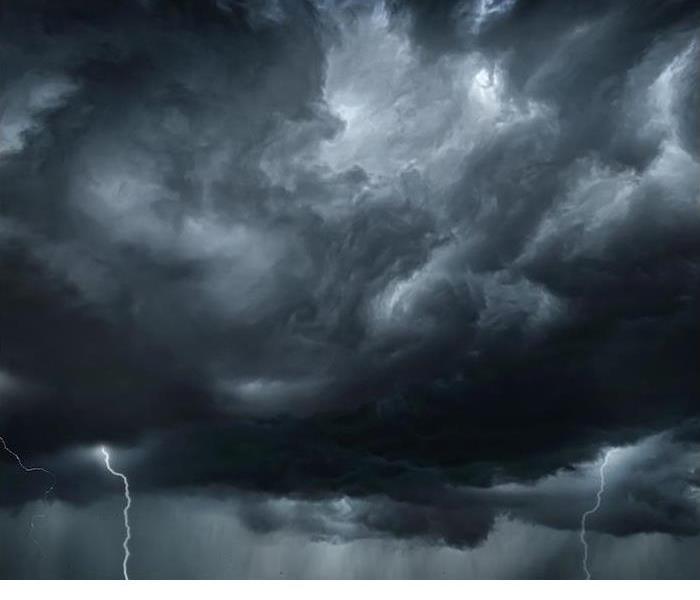 If you discover storm damage to your home or business, reach out to SERVPRO of Beaver County right away.
If you discover storm damage to your home or business, reach out to SERVPRO of Beaver County right away.
Thunderstorms are extremely common around the world, especially here at home. In fact, there are around 100,000 thunderstorms throughout the United States every year, which is more than 200 every single day.
These dangerous weather events can include strong winds, hail, flooding and lightning strikes that can all do serious damage to you and your home.
Here in Pennsylvania, Beaver County to be specific, we are particularly at risk of suffering from these disasters, facing cold fronts from the north and warm air movements from the south. Combined with the fact that rivers and creeks run through our entire area, flooding is extremely common around here due to storms.
It would be awesome to change the weather and prevent anything dangerous from coming close to us, but that’s a fantasy. Preparing for severe storms, on the other hand, is very possible, and can help you stay safer by reducing the impact storms have on you and your home.
From putting together an emergency kit to creating a communication strategy for your family, there are many ways to prepare that we’ll discuss here today.
Your Severe Weather Communication Strategy
Knowing what’s going to happen before it does isn’t impossible when it comes to storms. Staying informed by listening to your local officials who provide emergency alerts is the best way to know what’s coming.
On top of using your cellphone and television, acquiring an NOAA weather radio is a good idea in case you lose power or signal.
On top of being able to receive government alerts, developing a communication strategy for your family is important. Check in with every member of the family before the storm hits so you’re not worried about their safety when you should be focusing on yours.
Picking a safe room (like a basement, bathroom or closet) with no windows is crucial so you have a place to shelter when the eye of the storm is on you. Choose one of the bottom level of your house.
Your Severe Weather Emergency Kit
Aside from knowing what to do, knowing what to pack is also critical to outlasting the effects of extreme weather. Prepping an emergency kit that can sustain you and your family for at least 72 hours is imperative. Pack plenty of food, water and first-aid supplies because these often run out fastest.
To improve your kit beyond the basic necessities, adding flashlights, batteries, clothes and any prescription medication can prove useful.
Your Severe Weather Aftermath Checklist
Once the storms are gone, and it’s safe to exit your home, there are a few steps you should take to prepare yourself and debrief. Observing how your planning worked and didn’t work will help you improve upon it for the next disaster.
Then, once you and your family have been checked on, you should then inspect your property for damage.
With any luck, the storm came and went without damaging your home. However, in the event that your home is damaged, remember to call SERVPRO of Beaver County. Our expert team in green has more than 50 years of experience, and we always provide a quick response to any disaster.
If you discover storm damage to your home or business, you can count on SERVPRO to handle the restoration. We’re here 24⁄7 to spring into action—get in touch with us today.
The Basics About What Causes Flooding | SERVPRO® of Beaver County
4/8/2022 (Permalink)
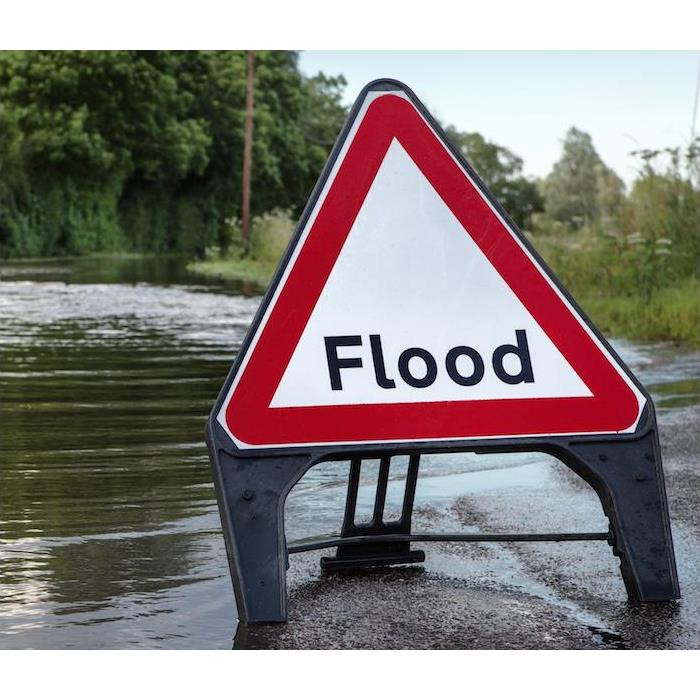 Regardless of the cause of the flooding, SERVPRO of Beaver County has the team to help you recover from any disastrous event.
Regardless of the cause of the flooding, SERVPRO of Beaver County has the team to help you recover from any disastrous event.
There are many weather-related issues that can cause devastation, but what people don’t understand is that flooding is the most devastating. In fact, flooding is the most common natural disaster, and it causes more deaths each year in the United States than hurricanes and tornadoes.
Every U.S. state and territory have been impacted by floods, and they’re usually caused by the same factors. Read on to learn more.
3 Types of Natural FloodingFlash floods are the most common type of flooding, which happens when rain falls so heavily that it can’t be soaked into the ground quick enough. The excess water runs off and can take out many things with it, from yard décor to vehicles.
River floods occur when the riverbanks overflow. This will cause the riverbank to break and flood the surrounding areas.
Coastal floods are similar to river floods, but occur along a coast. If a storm surge or cyclone comes through, it will cause the ocean water levels to rise. Just like the river floods, the banks can overflow and lead to flooding.
The 4 Most Common Causes of Natural FloodingHeavy rainfall. As you know, storms can produce a lot of rainfall. They can also stall across a specific area for an extended period. All of which can easily cause flash flooding. Areas that are urban are at a higher risk of flooding because of the amount of asphalt versus the amount of soil.
Oceanic activity. Just like with coastal flooding, storm surges and hurricanes will lead to an extreme increase in water levels, spilling over into nearby areas.
Dams and levees failing. Most people remember the disastrous Hurricane Katrina that happened in 2005. Rather than the hurricane itself, the dams and levees failing is what caused mass devastation to so many areas. This occurred because the pressure overtook the dam’s ability to withhold the water.
Snowmelts and ice dams. Some areas deal with large amounts of snow that accumulates over the winter months. This can lead to a buildup of snow and ice that will at some point melt when the temperatures start to warm up. This can cause ice jams, which happen because rivers become blocked by the ice buildup.
Regardless of the cause of the flooding, SERVPRO has the tools and teams to help your home or business recover from its disastrous effects. Contact us anytime when flooding or water damage makes a mess in your life.
What to Know About Flash Floods When Thunderstorms Are Present | SERVPRO® of Beaver County
12/14/2021 (Permalink)
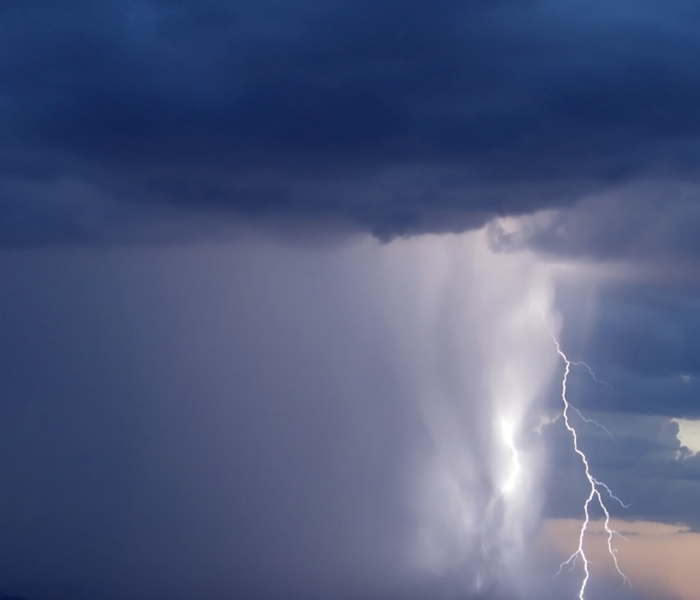 Flooding and standing water can be detrimental to your home's foundation. Drainage systems, like French drains, can help.
Flooding and standing water can be detrimental to your home's foundation. Drainage systems, like French drains, can help.
If your area is threatened by severe weather, you are likely concerned with lightning, hail and
high winds—and understandably so! However, it is also important to be aware of the dangers of
flash floods, including what they are and how to protect yourself against them.
Flash floods are the deadliest weather event in the United States, so it is extra important to be
on guard against them to keep your family safe.
### What Is a Flash Flood?
Like is indicated in the name, a flash flood happens extremely quickly. By definition, it has to
occur within six hours of heavy rainfall, though it often happens in under three hours.
Because flash floods come about so suddenly, there is generally little time for warning so that
people can get to safety, which is part of the reason why they are so incredibly dangerous.
Flash floods will often occur due to overwhelmed storm drains in urban areas, or rapidly rising
creeks and rivers in areas near the waterfront.
### How Will I Know If There Is a Flash Flood?
If your area is experiencing heavy rainfall, it is vital to stay tuned into local weather news outlets
to keep up with the rapidly changing conditions nearby. If a flash flood is a possibility, there will
either be a watch or a warning issued for the area that could potentially be impacted.
A Flash Flood Watch is issued if conditions are favorable for a flash flood, but one is not actively
occurring. If there is a Flash Flood Warning issued, flooding is imminent or actively occurring,
and you should seek higher ground immediately.
### Why Are Flash Floods Dangerous?
Flash floods are mostly dangerous because of how quickly they occur, but they are also
dangerous because people often do not realize what a threat they are. Walking or driving
through flood waters is a major hazard—a few inches of water that is moving quickly can knock
someone over and even carry away a car.
Flash floods are not something to be taken lightly, which is why it is a must to heed all watches
and warnings and seek higher ground should you be at risk.
*If you have flooding or storm damage, you can depend on us to help with the restoration.
Contact us today to learn more about our services and how we can handle water damage
quickly.*
Thunderstorm Safety Tips to Keep Your Household Protected | SERVPRO® of Beaver County
12/14/2021 (Permalink)
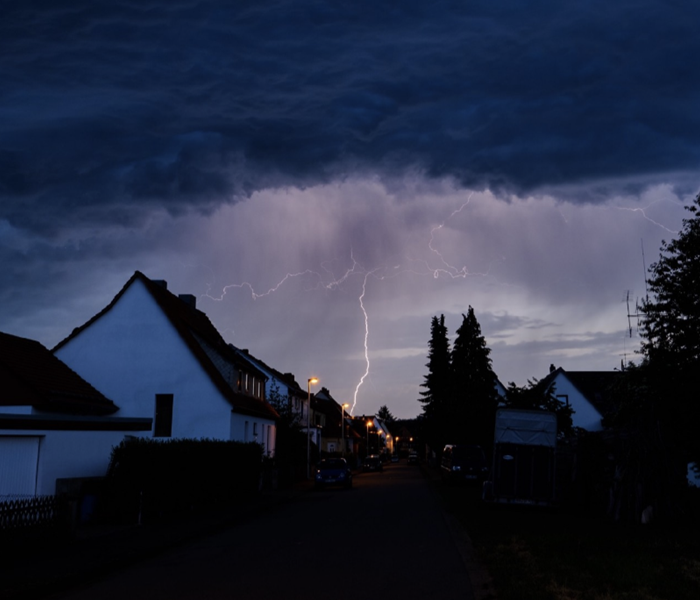 Have a plan for shelter and safety in case of a storm.
Have a plan for shelter and safety in case of a storm.
Thunderstorms are a rather frequent weather occurrence, but they are still quite dangerous and
have the potential to do a good bit of damage. While many things with a thunderstorm can’t be
prevented, such as the harm caused by high winds or flooding, there are ways that you can
ensure that you and your family are able to stay as safe as possible while the storm rages on.
Between lightning, hail and flash flooding, thunderstorms can cause serious injuries in several
different ways. By understanding when and how to seek shelter and prepare your family for bad
weather, you can help everyone stay safe until the storm subsides.
### How to Stay Safe in a Thunderstorm
**Know the difference between watches and warnings.** Staying tuned into local weather
broadcasts is so important when severe weather is possible, and understanding exactly what
the watches and warnings mean can help you make the right decisions. A Severe Thunderstorm
Watch is issued if conditions are favorable for a severe storm to develop, which is an indicator
that you should have a plan in case the weather turns sour. When that is upgraded to a Severe
Thunderstorm Warning, that means a severe storm has been detected in the area and you
should immediately take shelter.
**Have a plan for seeking shelter.** The best thing to do if severe weather is a possibility is to
stay at home, indoors and wait for it to pass. However, if you are caught out of the home and a
thunderstorm is nearby, have a plan for taking shelter in your car, in a nearby business or in
another safe location until things pass by.
**Keep your home emergency kit stocked.** It is not uncommon for severe storms to knock out
the electricity, which can last anywhere from a few minutes to a few days. A well-stocked
emergency kit can keep you from having to fret over this—be sure to stock flashlights, batteries,
first-aid supplies, entertainment options, nonperishable food and plenty of water for your family
so everyone can stay comfortable while the power is off.
*If you have damage to your home from a storm, you can count on us to help. We are here for
all of your restoration needs—contact us today to learn more about our services.*
What Makes a Thunderstorm Hazardous? | SERVPRO® of Beaver County
5/6/2021 (Permalink)
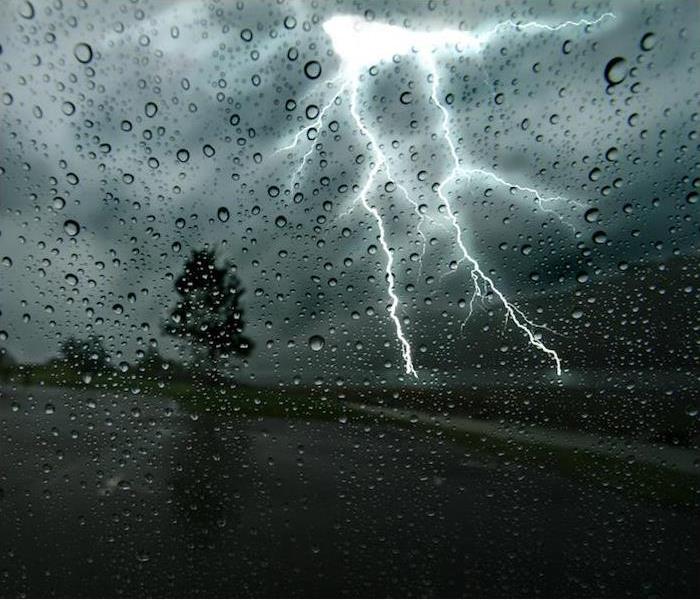 Thunderstorms can pop up at any moment. Contact SERVPRO of Beaver County if you experience any damage.
Thunderstorms can pop up at any moment. Contact SERVPRO of Beaver County if you experience any damage.
Sometimes it starts with a breeze that turns into stronger gusts, or maybe you first see the deep gray rain clouds. But then you hear the sky rumble and you instantly know: A thunderstorm is rolling in.
These common, but sometimes very dangerous storms, are known for their springtime arrival, but can last later into the year, often bringing with them hail, high winds, lighting and flooding.
As is adequately named, a thunderstorm is defined as any storm that has thunder (and lightning, by definition, comes with it as well). For it to be classified as a severe thunderstorm, it must have a minimum straight-line wind speed of 58 miles per hour and hail that is at least one inch in diameter.
Being prepared is the most important way to keep your family and property safe during turbulent weather, so we’ll look at some hazards that could make these storms most threatening.
The Most Dangerous Elements of a Thunderstorm
Lightning strikes. While most people consider lightning to be a scary phenomenon associated with a thunderstorm, many don’t know the full extent of the damage it can take on person and property. A recent report showed that lightning injures about 300 people every year. Furthermore, the damage that lightning, let alone high winds, can do to your property includes starting a house fire and being responsible for felling trees that could land on homes or vehicles. The most important thing to remember is that even if you may not see it yet, lightning will tag along in every thunderstorm, so the danger is a possibility even if it’s not made itself visible yet.
Damage from hail. Hail can sound quite scary falling against a roof or a window, and oftentimes it inflicts as much damage as it sounds like it might. It most commonly causes damage to uncovered cars, people and pets who don’t have adequate protection, and roofs and sidings of houses.
Flash flooding. If you’ve ever experienced how quickly flash floods can happen, you’ll know the danger that it can do in a short period of time, especially for drivers on flooded roadways. In an instant, a storm drain that is not properly draining or a small ditch can overflow and cause driving on these roads a life-threatening situation. Damage to vehicles is very possible, as is having a car carried away by the tide in severe circumstances.
Thunderstorms are part of the natural rhythm of weather disturbances, but severe storms can mean serious damage to person and property. If a storm has caused damage to your property, contact us 24⁄7 to see how our storm restoration processes can help.
Your Guide to Protecting Your Home From Spring Storms | SERVPRO® of Beaver County
3/10/2021 (Permalink)
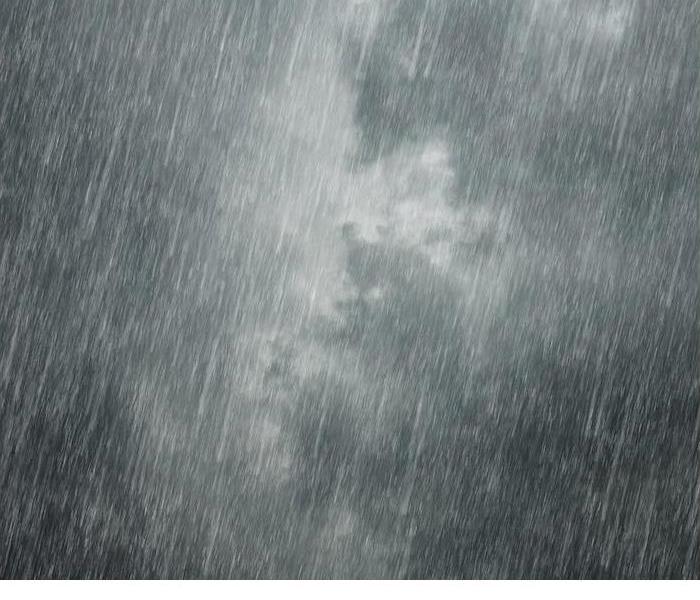 If you experience any property damage from spring storms, contact SERVPRO of Beaver County.
If you experience any property damage from spring storms, contact SERVPRO of Beaver County.
It’s time for spring, and if you’re like many local residents here in Beaver County, it can’t come soon enough.
Many people spend the days before the weather starts warming up trying to decide how they want to spend the Saturday and Sunday afternoons. DIY projects are a popular option.
If you’re planning to add DIY projects to your list, then you might want to consider doing a few that will help maintain your home and protect it against one of spring’s biggest weather threats—strong thunderstorms.
There’s nothing we can really do to stop storms from hitting. But we can take a lot of steps to ensure our homes are as prepared for them as they can be.
Preparing Your Home for Thunderstorms
Why not add these items to your to-do list for the upcoming warmer season?
Check your gutters for debris. Clean gutters are vital. They allow water to move the right way around your house. If your gutters are clogged, they can cause water damage. This is a great step to add to your seasonal home maintenance routine. It can protect your family home all year.
Check your home for other common storm damage hazards. Check for overhanging tree limbs, unsecured grills, and furniture or gazebos. Cut tree limbs that hang over your roof or garage and secure anything you can. While the tree limbs might seem harmless on a sunny day, if they blow off when it gets stormy and windy, they can damage your roof. Avoid this scenario completely by keeping your trees trimmed.
Ensure your roof is ready to withstand storms. You don’t want to discover there’s a problem with your roof after a heavy rainstorm. Instead, you’ll want to be sure your roof is in good shape if a storm starts hitting. Check for things like missing shingles and signs of leaks. Repair them.
If a fire, flood or any other cause damage to your home, you can always count on us for restoration assistance. We are available 24⁄7 in the event of an emergency. Contact us at any time to learn more about our restoration services and how we can help you.
Droughts in Pennsylvania
8/12/2020 (Permalink)
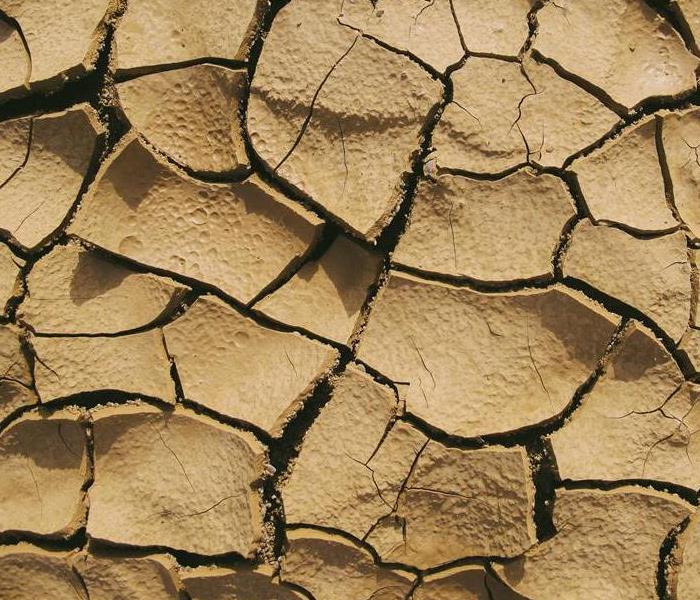 Droughts can cause cracks in the soil and your foundation.
Droughts can cause cracks in the soil and your foundation.
We normally associated storm damage to flooding, high winds, and hail. What we forget, is that no storms can create issues for you and your property, too! On the other end of the scale if you don’t have rain or water for days, weeks, or months, then your community can go into a drought. The main effects of drought are actually something you would never think of - flooding. When a drought occurs all of the moisture dries up causing clay heavy soil to shrink. This means the foundation that your home is build on begins to shift and crack from the changing movement. In turn, your foundation is not able to withstand the force of the movement and may start to crack under pressure. These cracks are silent and won’t effect you during the drought. Only until the drought is over and your area begins to bring rain will you discover the cracks to your foundation. From there water can entire your home causing the cracks to erode and make bigger openings. From there you can have moisture entering your home causing mold and even worse full blown flood.
Severe Weather Types in Beaver County
8/5/2020 (Permalink)
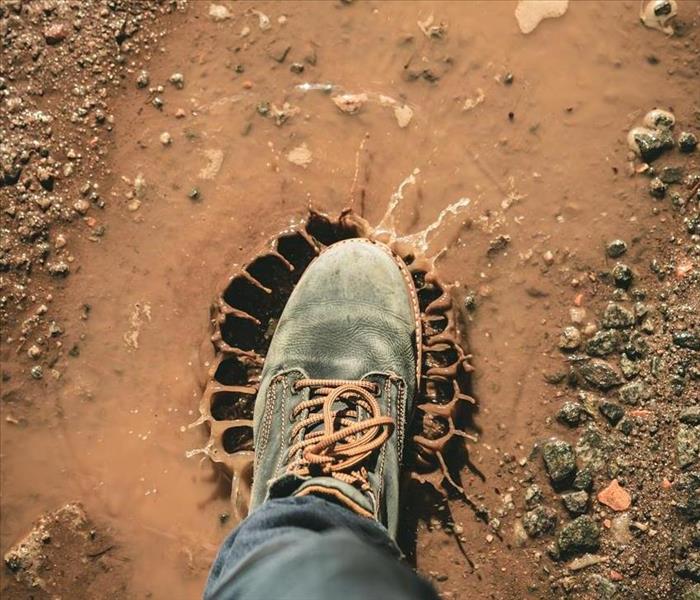 Mud can cause more damage to your home than you think!
Mud can cause more damage to your home than you think!
There are many different types of weather patterns in Pittsburgh and the Beaver county area. In total, our area is not as easily affected by the major natural disasters around the world, but we do still need to be aware and prepared for severe weather.
What types are there in the Pittsburgh area?
Tornadoes - We are most at risk for tornadoes during the spring time when hot and cold air combine. Always have an emergency action plan and go to a basement or a bathroom during a tornado warning. If your home is damaged, leave the property immediately to risk being injured and call your local authorities. Hurricanes - While we don’t get hit with Class 5 hurricanes, we still receive the residual effects of high energy hurricanes from the coast. Rain, hail, and high winds can wreck havoc on your home. Make sure to stay up to date on the latest weather predictions and have an emergency action plan. Severe Lightening Storms- We have had our fair share of severe lightening storms in the Pittsburgh area. Always have an emergency kit that includes a flashlight and matches and a first aid kit. Also make note of any dead limbs or trees surrounding your home. These could be possible targets for lightening strikes near your home and can cause fires and damage to your home if they fall. Flooding- Most flooding occurs from the above natural weather patterns. If a flood occurs in your home make sure to turn off all electricity and stay away from the water. Call our SERVPRO of Beaver County office immediately to start the mitigation process. Mud/ Landslides - Our easily manipulated soil and sediment paired with the hills of Beaver County can mean disaster during a heavy rainstorm with flooding. Landslides can easily create a track of fast moving mud and debris into your home. Call us for all of your restoration needs at 724-709-7235.
Hurricanes and What You Need To Know.
8/1/2020 (Permalink)
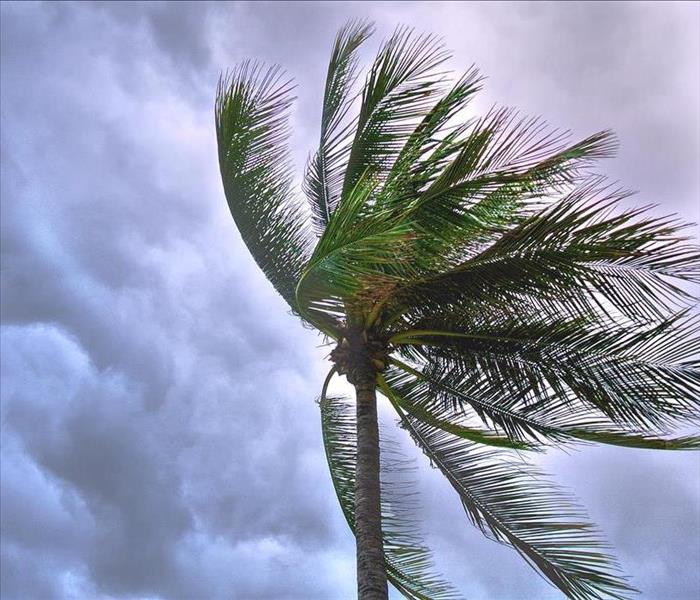 We may not have palm trees, but we do have hurricanes!
We may not have palm trees, but we do have hurricanes!
It’s hurricane season! It may be silly to think since we don’t live by the ocean, but hurricane’s can rear their ugly aftermath all up the East Coast and Pittsburgh and Beaver County can get right in the path of destruction. While we will ultimately never truly be in the eye of the storm there are still ways to be prepared for the residual weather coming from a hurricane.
What to look for:
Most hurricanes will bring heavy winds and rain to our area, but we could even see impacts of hail and even snow!
How to prepare:
- Make sure you are staying up to date on the local weather forecast and listen! If a Meterologist tells you to be prepared there are a few things you should do.
- While we do not need to board up windows like many on the coast it is good to be mindful that hail and other debris that could possibly break or dent windows. Have towels and items on hand that you can use to cover any holes or cracks created.
- Be mindful of any items in and around your yard. Try and put anything away that is not held down and at risk of blowing away or blowing into your home. Be aware of any dead limbs or trees on your property as well.
- Keep an emergency box filled with a flashlight, matches, first aid kit, and any other items that are important.
- Lastly, make sure you know your emergency services number in case of severe weather damage to your home. If your home does become damaged during a hurricane weather it’s due to flooding, hail, or wind damage - SERVPRO of Beaver County is your one stop shop for all of your home restoration needs. Call us at 724-709-7235.
What's the different between flood warning and flood watch?
4/20/2020 (Permalink)
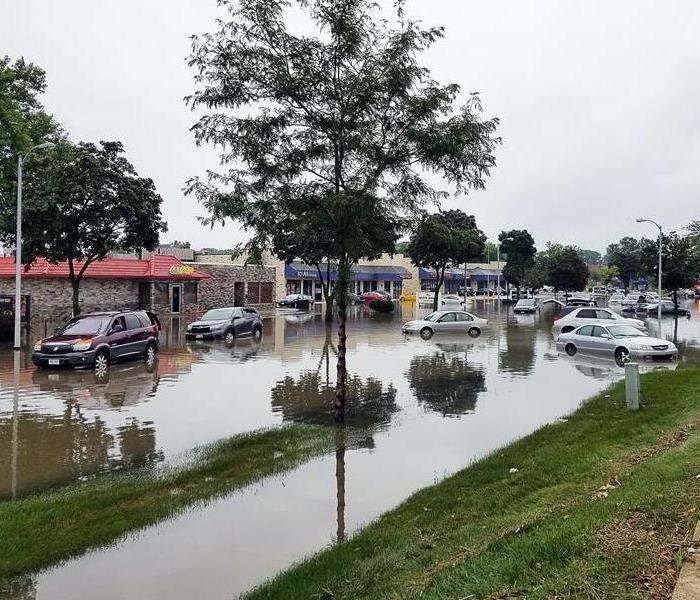 Be prepared during a flood warning.
Be prepared during a flood warning.
When there are heavy rains in our area, we might hear the words “flood warning” or “flood watch.” For many of us, either phrase tells us that we need to be alert to flooding. But did you know that there’s a significant difference between a “warning” and a “watch?”
Flood Watch
A flood watch is an alert that indicates the conditions are right for flooding to happen. However, it does not mean that flooding will necessarily occur. When you see this alert, you should prepare for flooding since it is a strong possibility. Monitor the local news or other reliable sources for updates.
Flood Warning
A flood warning is announced when flooding is either impending or already occurring. When you get this alert, you should take immediate action and monitor official channels to get updates on the condition. If you’re unsure what to do during a flood, check out the resources at Ready.gov!
Monitor News or Radio Stations
Because weather can be unpredictable, always keep an eye on your local news or radio stations. Many of them will also have apps or websites that offer real-time updates. As long as you are familiar with the phrases they use, you’ll be able to act accordingly when they issue alerts. In fact, they just might save your life.
Hail Damage and Your Property
9/10/2019 (Permalink)
 Hail can cause considerable damage to your home or business.
Hail can cause considerable damage to your home or business.
What is hail?
Merriam Webster Dictionary defines hail as: precipitation in the form of small balls or lumps usually consisting of concentric layers of clear ice and compact snow.
Thunderstorms with high updrafts bring rain drops into freezing temps causing them to form into ice balls I.e. hail.
Hail Damage can come in many different forms and lead to several different scenarios. After the storm (provided the area is safe) you should do a property inspection to see if your home has been affected.
What to look for:
The obvious sign of hail damage will be actual dents or holes in your property.
If you notice your roof starting to leak or discoloration in your ceiling your roof could have been damaged, and worse is letting in water that can lead to major water damage.
Look at your surroundings. Have you noticed shingles on the ground or other debris in your yard?
What to do if hail damage has been spotted:
At SERVPRO we offer roof tarping that be an efficient and quick way to make sure your home does not acquire more damage until your roof is permanently fixed.
If you notice possible water damage we can assess the situation and let you know the exact steps you need to take next.
Lightning Fires and what you need to know
8/26/2019 (Permalink)
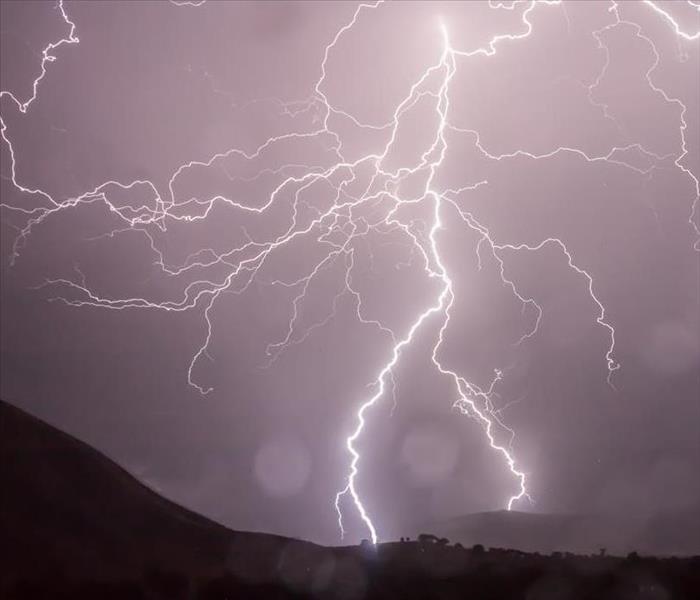 Lightning damage is no joke. Learn how to stay prepared.
Lightning damage is no joke. Learn how to stay prepared.
Keeping safe during a storm and preventative measures.
The first thing you do if you’re preparing for a lightning storm is to unplug or turn off appliances like computers or TVs. It’s best to stay off electronic equipment that is plugged in during a storm and to avoid showering or using running water. Make sure to stay inside during these storms.
What is Lightning and how can it enter my home?
A lightning strike is an electrical charge in the atmosphere and can supply hundreds of millions of volts shocking into your home. Lightening can cause roof and electrical damage, but can even cause fires in your home. Lightning can enter your home through several different places.
- Roof
- TV antenna
- Chimney
- Telephone or power line
- Nearby tree
- Garage door
- Cable lines
- Irrigation system
- Gas piping
How to spot lightning fire damage?
When it is determined safe to exit your home make sure to inspect your property for any damage. A lot of times lightning fires actually start in enclosed spaces like the attic or basement first making it harder for smoke alarms to detect a fire until it is too late. Look for things such as missing shingles or chimney damage if you believe your house was hit by lightning.
If you suspect damage has occurred to your home call the fire department immediately as there could be a slow burn in your home. If your home has been affected by fire, we can make sure to restore your home to its previous condition. Call SERVPRO of West Beaver County for all of your property restoration needs.
Prepping for winter storms in the summer
7/23/2019 (Permalink)
 Prepping now can give you less stress later
Prepping now can give you less stress later
It’s hard to even think about winter right now in the middle of summer, but we aren’t that far away from the blistering cold and heavy precipitation. We can’t ever predict when winter storms will start and how bad they will be, but there are plenty of preventative measures that you can work on now with your home or business while the temps are still hot.
Check your chimney
Have a chimney cleaning service come and clean out your fireplaces. Soot and other debris can cause your chimney to get clogged and start a slow burn within the chimney. This can lead to a major chimney fire.
Check your furnace
Similar to having your chimney serviced, you will want to make sure your furnace is cleaned of any debris and in working condition. Furnace puffbacks are one of the leading causes of smoke damage and fires in the winter.
Alternative Fuel Sources
If you have a wood furnace now is the time to start chopping wood for the winter. You can never have enough wood. Our winter temps can get well below freezing and having a safe buffer of wood will always help.
Start working on a snow emergency kit (this will also help during large summer thunderstorms)
Keep a stash of hand warmers and body warmers that are air activated. Start purchasing lanterns and flashlights. A lot of stores have them on sale during the summer months for camping.
It’s never too early to prep for winter. Read about our storm procedures here.
Roof Tarping = Good Quick Fix
7/18/2019 (Permalink)
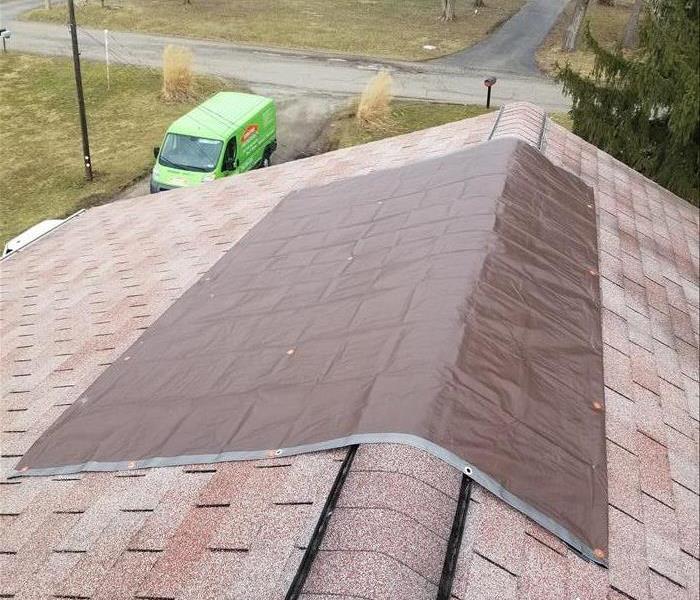 Roof Tarping is a quick way to prevent further damage to your home or property.
Roof Tarping is a quick way to prevent further damage to your home or property.
Heavy wind and storms can easily blow roof tiles off, leaving your roof and ceiling at risk for water leaks. This can especially occur during the hurricane season or those strong Pennsylvania winters.
When this happens, you roof is immediately susceptible to more damage especially if the storm and high winds are continuing. Roof tarping can be used in these instances.
Why should I consider roof tarping?
Roof tarping is a quick and efficient way to patch up your roof. While not permanent, roof tarping works so that your roof does not suffer further damage from the storm. This allows you time to work on fixing your roof permanently to prevent future water leaks in your home or business.
What can happen if I do not use roof tarping in between fixing my roof?
What may seem like a small problem of missing shingles can quickly turn into a disaster. Leaving your home or business exposed to the elements can cause water damage leading to mold or worse, structural damage. Roof tarping may also be required by an insurance agency if you have filed a claim.
Our SERVPRO team is versed in doing all types of home remediation. Our highly trained technicians take the appropriate precautions when operating any job so that you can remain stress free. If you need home repairs, call SERVPRO of West Beaver County today!
Pittsburgh Storms are Hitting Hard This Summer.
7/3/2019 (Permalink)
 Flooding can cause many issues for your home.
Flooding can cause many issues for your home.
Pittsburgh and the surrounding area have been hit hard with flash floods and heavy rainfall. According to the National Weather Service, many areas including Beaver and Butler County received almost 7 inches just this past month of June. Heavy rainfall coupled with high winds can not only cause flooding, but fallen trees and loss of shingles making you prone to roof leaks. This can lead to severe damage to your home or commercial property. We know at SERVPRO that no matter how prepared you are disasters can still happen. That’s why when your home is damaged due to a storm we make it our priority to get on-site to your home or business FAST.
SERVPRO of West Beaver County can scale our resources by accessing the equipment and personnel of 1,700 Franchises. We can also access Disaster Recovery Teams that specialize in major storms and catastrophic events.
April Showers: Preparing for a Wet Spring
4/18/2019 (Permalink)
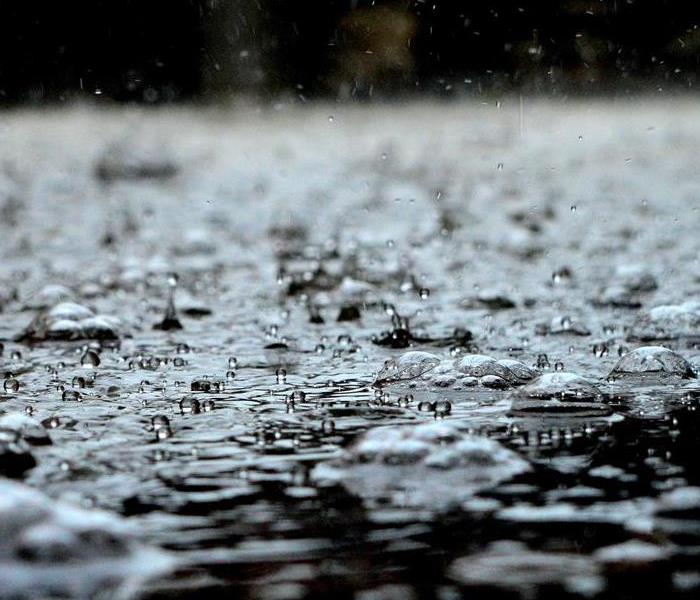 Heavy spring rainfall can bring more than just flowers!
Heavy spring rainfall can bring more than just flowers!
The days are getting longer and the birds are chirping louder! That can only mean one thing - spring is here. The spring arrival can bring more than flowers and fun - the newly warm weather and intense rain can create the perfect breeding ground for unwanted mold.
Mold Causes and Factors:
Mold spores can enter your home through windows, doors, or even you.
Mold thrives on moisture. Flooding, high indoor humidity levels (above 45 percent), leaky roofs, improper building maintenance, and indoor plumbing issues are all elements that can create the onset of mold growth. And remember, you don’t need significant water damage for mold to grow in your home.
A/C and Heating units can push spores around other areas of the property.
Certain building materials provide food for the mold such as, drywall, plywood, and carpet padding.
Remember, you don’t need significant water damage for mold to grow in your home. All you need is moisture, heat, and dispersion for mold to become an issue.
Mold Signs:
Strong musty odor
Physically signs of mold can vary with in different colors (gray, green, white, or black)
Mold can lead to symptoms of runny nose, itchy eyes, or headaches.
What do to if you think you have mold:
Stay out of affected areas.
Turn off the HVAC system and fans.
Touching or distrubing mold areas can cause spreading.
Contact SERVPRO of West Beaver County for mold remediation services.
Call Us Today – (724) 709-7235





 24/7 Emergency Service
24/7 Emergency Service



